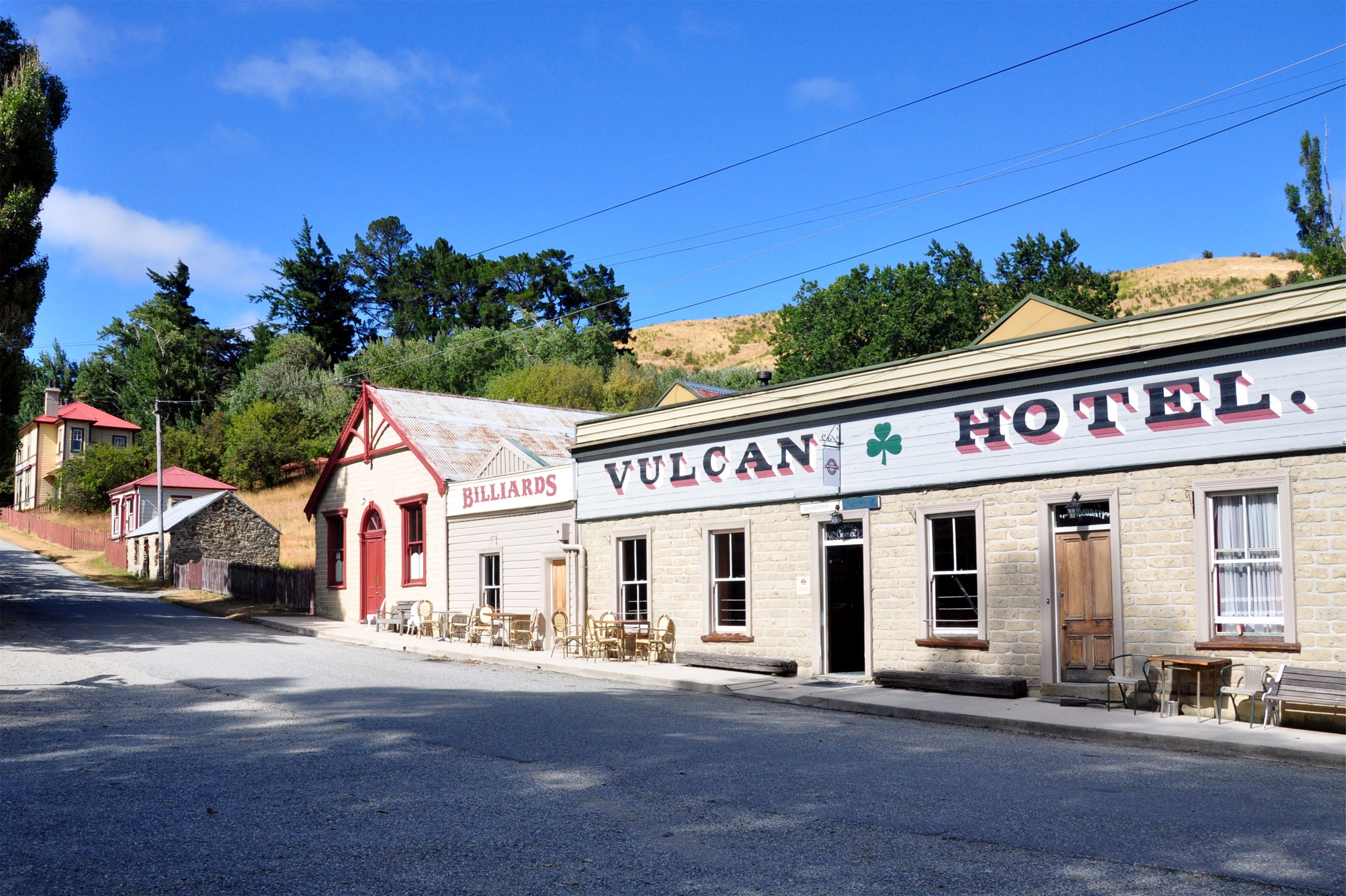The next stop on our gold mining tour of Central Otago was the town of St Bathans, established in 1863 to service the local gold rush, the town still feels like a small mining outpost. We stopped outside the Vulcan Hotel, which is still in business and wandered up the main street to look at the surviving buildings.

The community hall on the main street, next to the Vulcan Hotel, is the oldest continually used mud brick hall in New Zealand. It was built in 1892 by the local publican as a public hall ‘suitable for theatrical and other entertainment’. It had many uses in its history including a Masonic Lodge, school room, mining company office and picture theatre, but today continues to serve as a community hall for the few year-round residents.

Like many of the towns in the area, the buildings weren’t originally constructed to last, so it is unusual to see so many that are still intact. Although it is perhaps not surprising to see that the bank was one of the few buildings that has survived. After walking up and down the short main street, we made our way to the edge of town, to the shores of Blue Lake.

St Bathans originally stood next to Kildare Hill, a 120 metre tall hill, which today has been all but washed away. Blue Lake is in fact the remains of a 69 metre deep ‘Glory Hole’; which at the time was the deepest mining hole in the Southern Hemisphere.

The gold at St Bathans was alluvial gold, and hydraulic mining techniques were used to literally wash away huge sections of the hillside and funnel the gravel through a series of sluice boxes. These mining techniques, proved very successful and over several decades the average output at St Bathans was 16,000 ounces of gold a year.

Mining at the site was forced to stop when the sides of the pit started to get too close to town, although not before a few houses were lost into the mine. The huge hole slowly filled with water, which picked up minerals from the surrounding rocks. Typically this gives the lake the deep blue colour after which the lake gets its name, however the recent heavy rains when we visited seemed to give it more of a greenish tinge.
